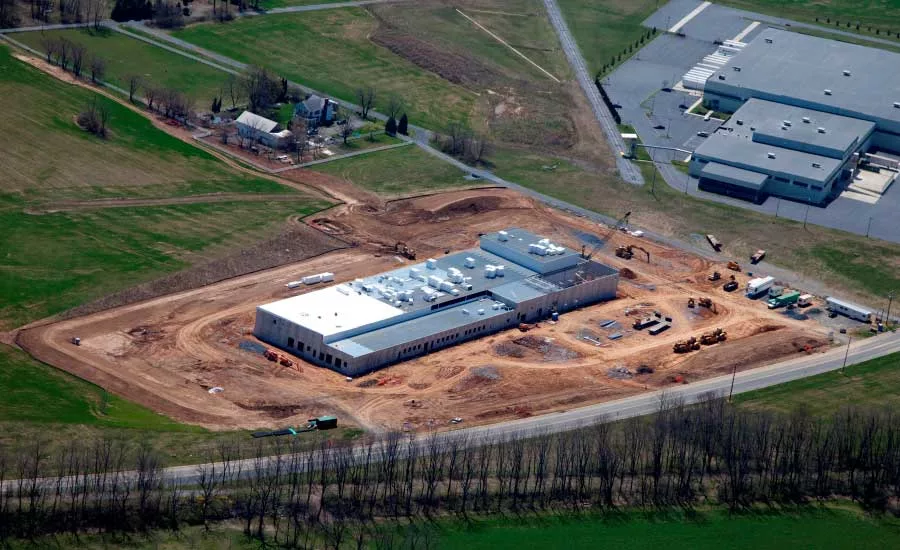Building a future food factory, Part 2: Locale
Locale plays a critical role in the site selection of a new food and beverage processing facility.

The Austin Company identified this location as the most desirable for a bakery production facility based on transportation models, availability of suitable sites, availability of labor, and other factors. Austin evaluated fifteen different communities to perform a comparative cost analysis. Source: The Austin Company.
So, you’re looking for a site to build a new food or beverage processing plant. Maybe you evaluated all the key aspects of suitable land, as discussed in the first part of this series, which is based on the Food Automation & Manufacturing Conference 2017 presentation by Karl Linck, vice president of engineering for Sargento Foods.
But what about the area that land is located in?
See more articles in this series:
“The locale is the town, the city or the general area the property is located in,” Linck says.
The first step is identifying the local development authority or possibly the larger state development authority.
“They understand the land that is available, and they understand what they want,” he says.
Once you’ve done this, the next step in identifying an ideal locale for a new food factory is seeking out areas that have well-thought out development growth plans. Linck advises to avoid towns that have a mix of factories and housing mingling in the same neighborhood—which could signal a lack of planning before these elements were constructed.
“If you’re going to invest in a big factory, you really want to be in a factory area,” Linck says. “You really don’t want to be in an area where you shouldn’t be.”
Another important factor in considering locale is looking for areas that have an established tech school base with a supportive curriculum. For instance, you don’t want to build a new food manufacturing facility in an area where most of the students are receiving hospitality or medical training in tech schools. The worker base will likely not have the skill level you’ll need in employees.
Other things to look for are areas that offer training grants or have a jobs investment program, which can provide funding and services to companies for employee training purposes. Also, determine if tax credits are being offered.
Additionally, carefully consider site development and who will undertake the development.
“We had a plant in Tampa a few years ago and we were going to build a new plant there. We had a 13-point plan where we had to upgrade the roads, the schools, get the natural gas, do the evaluation of the power grid, evaluate and upgrade the POTW,” he says. “It really was unfriendly.”
One way to avoid this unpleasantness is to select a site that has been deemed a certified food site. These sites have undergone a certification program to fast track development for end-users on an accelerated timeline, says Frank Spano, managing director, Austin Consulting. This certification program can also reduce companies’ risk by orderly presenting all essential site information up front to them.
“A certified site will address and provide the necessary documentation to critical utility concerns that many food and beverage operations must address when investigating new sites,” says Spano.
When looking at a certified food site, Spano says the following information is presented to companies before selection:
- Electric power – capacity and reserve capacity at substation serving site, additional substations that can serve the site if dual feed power is critical to the operation, current rate structure and cost, site’s location within the electric power grid network, type of service (underground versus overhead).
- Water and waste water – availability and cost to provide service including detailed rate information, current and excess municipal capacity of the system, line size at the site, static and residual water pressure and flow (in gallons per minute) at site, chemical composition of water supply, one-time connection or impact fee structure. Detailed information on ability to handle waste water effluents, including BOD’s, TSS and FOG typical effluents for most food processors.
- Natural gas – availability and cost to provide service, current rate structure, line size at the site, available pressure, availability of firm versus interruptible gas service.
Additional critical information can be uncovered by selecting a certified food site, Spano says, such as having an evaluation of existing neighboring land uses to ensure compatible neighbors for a food and beverage operation.
According to Linck, it is really important the community says, “We want you. We need you.” Otherwise, it might be construed that a company is forcing its way into an area.
“I don’t think that’s worth it,” he warns. “I would try not to do that.”
Looking for a reprint of this article?
From high-res PDFs to custom plaques, order your copy today!







